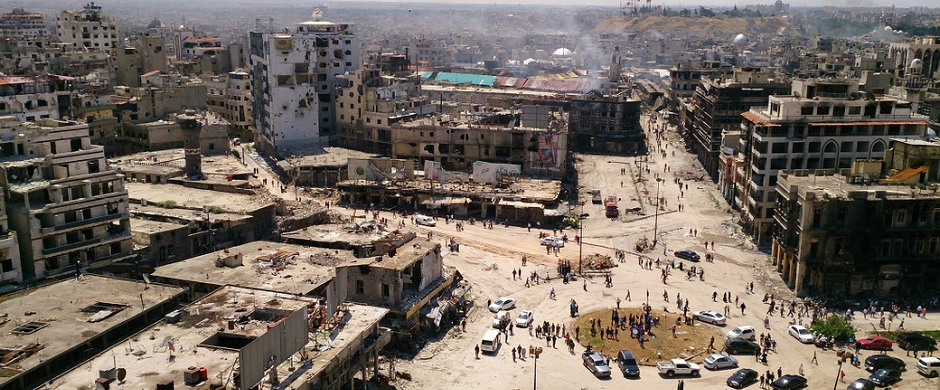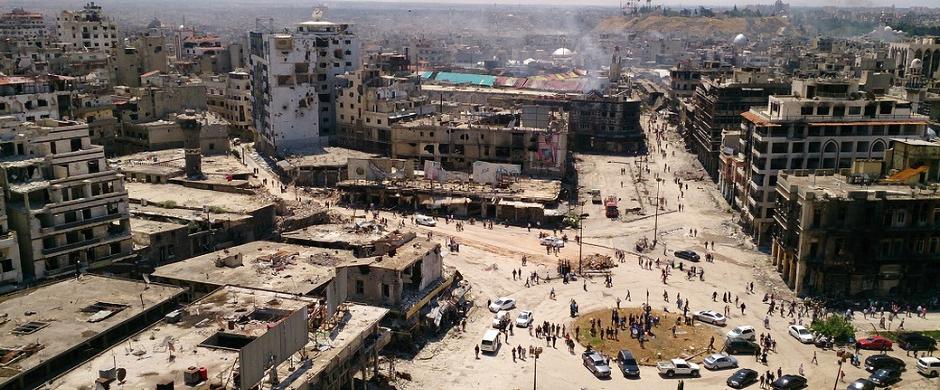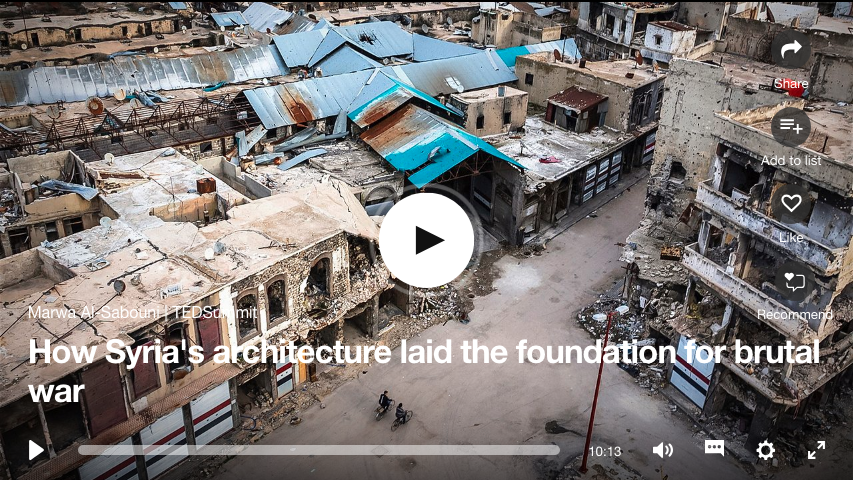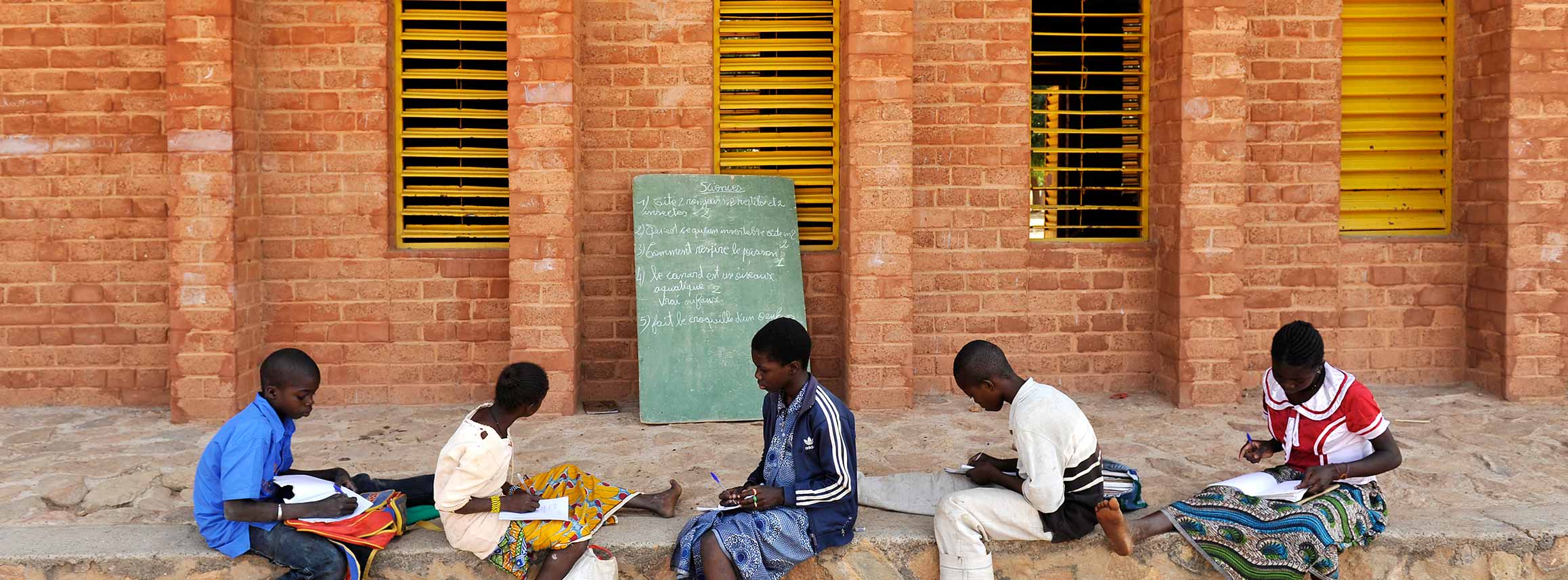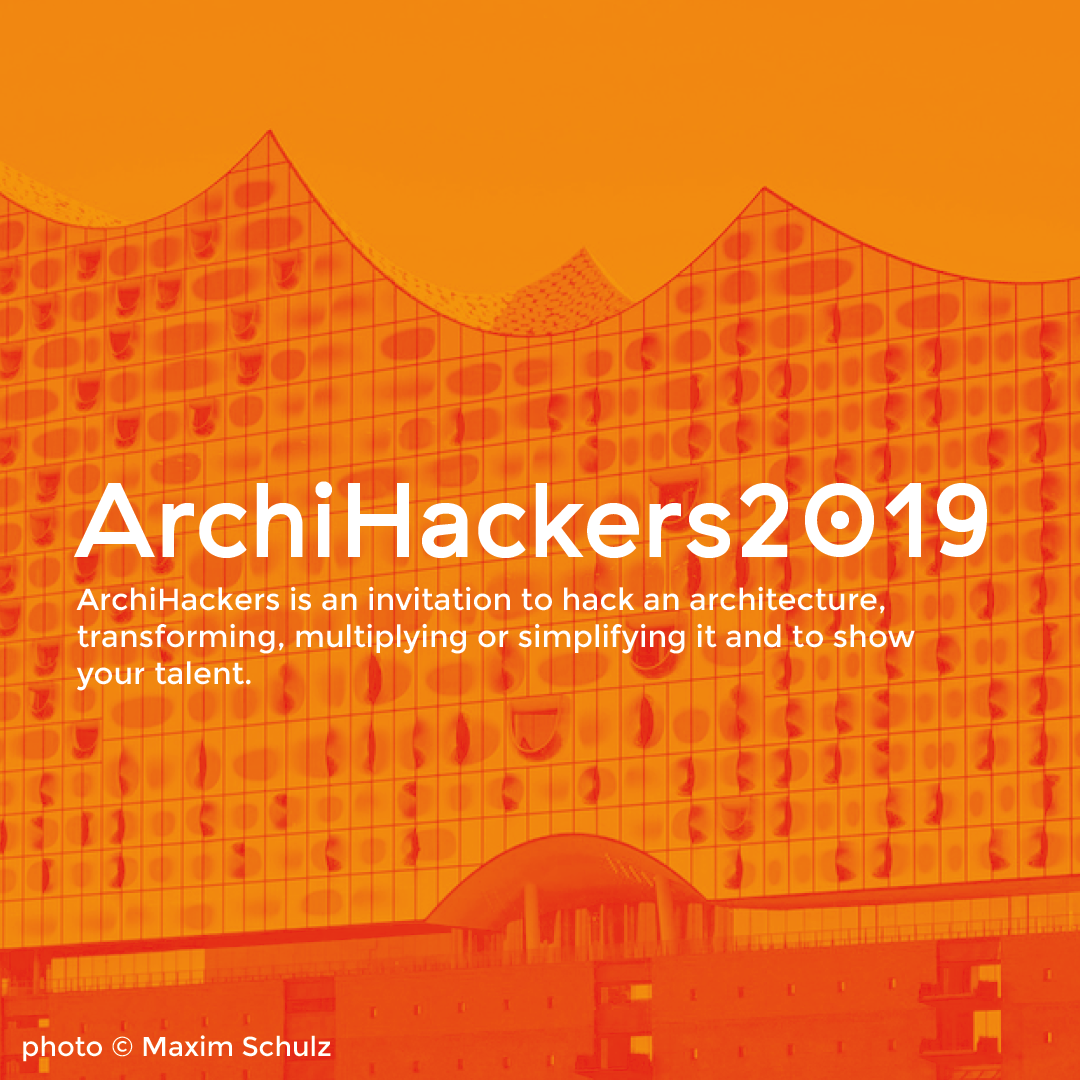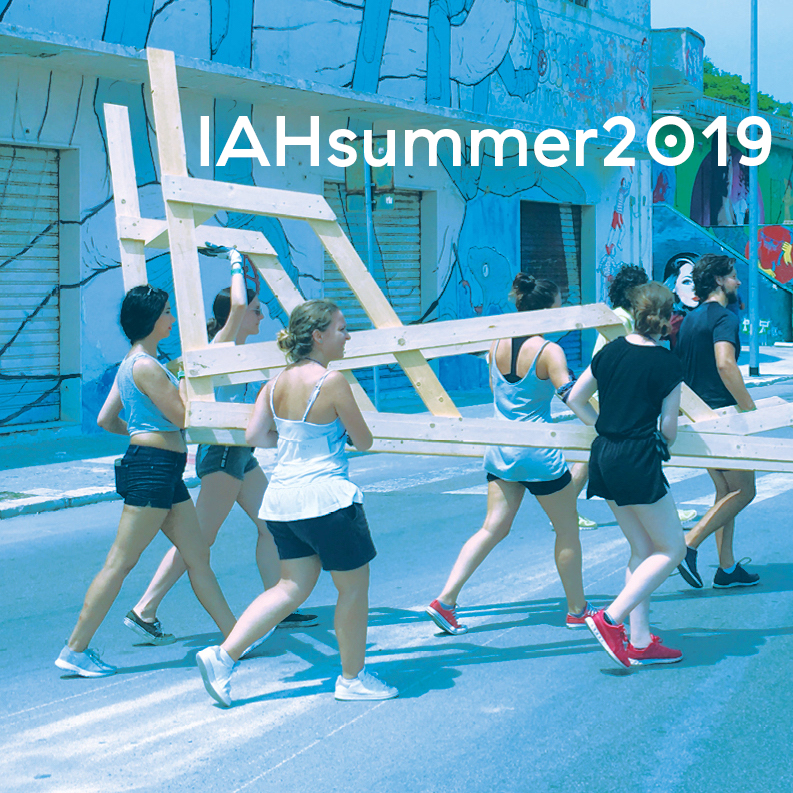What triggered the writing of this article was the TED talk by Marwa Al Sabouni, entitled ‘How’s Syria’s architecture laid the foundation for brutal war’ (1). According to the Syrian speaker, the division of the once tolerant and multicultural center of her hometown Homs into single-identity territories defined by class and religion was one of the determining factors which led to conflict. This inspiring video made me question the real impact our built environment can have upon society. As proved by the numerous theories developed by sociologists, architects, and other researchers, there exists a corresponding link between the architecture of a place and the mentality of its inhabitants.
The aim of the present article is to comment on this connection, which undoubtedly cannot be easily analyzed.
///
Ciò che ha innescato la stesura di questo articolo è stato il discorso di Marwa Al Sabouni al TED, dal titolo “Come l’architettura della Siria ha gettato le basi per una guerra brutale” (1). Secondo la speaker siriana, la divisione del centro, un tempo tollerante e multiculturale, della sua città natale, Homs, in territori a identità singola definiti in base alla classe sociale e alla religione di appartenenza, è stato uno dei fattori determinanti che hanno portato al conflitto. Questo stimolante video mi ha fatto dubitare del reale impatto che il nostro ambiente costruito può avere sulla società. Come dimostrato da numerose teorie sviluppate da sociologi, architetti e altri ricercatori, esiste un legame corrispondente tra l’architettura di un luogo e la mentalità dei suoi abitanti. Lo scopo del presente articolo è di commentare questa connessione, che senza dubbio non può essere facilmente analizzata.
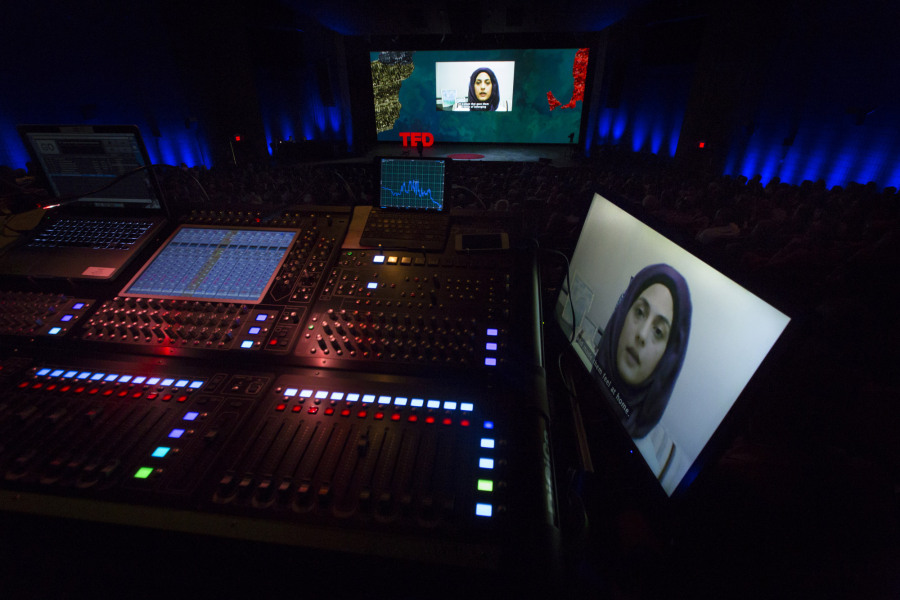
Obviously, architecture is not the axis around which all human life rotates, but still, it has the power to suggest and even direct human activity.
By examining various examples of architecture and urban planning of prehistoric, ancient, as well as modern cities, we can gain an insight into the communities that gave birth to them. In fact, the interaction of public buildings, administrative centers, commercial/leisure and residential districts changes in time: the rectangular Roman grid, the dense medieval historic cities, the wide modern boulevards, and today’s complex urban networks, all represent societies that evolve through centuries.
So, if we do accept that architecture, like art, has the inherent power to express the social and intellectual aspects of a community, can we at the same time accept that the built environment can inspire community bonding, sensitivity and interpersonal relationships? And if so, how can we build cities that promote tolerance, coexistence and serenity, cities which make people truly experience all the above?
///
Ovviamente, l’architettura non è l’asse attorno al quale ruota tutta la vita umana, ma ha comunque il potere di influire e persino guidare l’attività umana. Esaminando vari esempi di architettura e pianificazione urbana delle città preistoriche, antiche e moderne, possiamo ottenere una visione delle comunità che li hanno generati. Infatti, l’interazione tra edifici pubblici, centri amministrativi, distretti commerciali / ricreativi e residenziali cambia nel tempo: la griglia rettangolare romana, le città storiche medievali, gli ampi viali moderni e le reti urbane complesse di oggi, rappresentano tutte società che si evolvono attraverso i secoli.
Quindi, se accettiamo che l’architettura, come l’arte, ha il potere intrinseco di esprimere gli aspetti sociali e intellettuali di una comunità, possiamo allo stesso tempo accettare che l’ambiente costruito possa ispirare il legame con la comunità, la sensibilità e le relazioni interpersonali? E se sì, come possiamo costruire città che promuovano la tolleranza, la convivenza e la serenità, città che fanno vivere alla gente tutto questo?
Decoding the past, working for the future
In the video mentioned before, Al Sabouni states that architects should create spaces ‘that make people feel they belong’, spaces that are lived to be shared and enjoyed by all. I believe that architects throughout their studies should acquire the basic tools which will enable them to reach this goal: they should become capable of understanding the inner power of an evolving city, in a way that enriches their ability to design contemporary buildings. What is more important though, is that architects should not only think of their building as a single ‘case-study’ or product, but rather in connection with the wider community; this is quite a demanding and challenging attempt.
///
Nel video menzionato prima, Al Sabouni afferma che gli architetti dovrebbero creare spazi “che facciano sentire alle persone che questi appartengono a loro”, spazi che sono vissuti per essere condivisi e apprezzati da tutti. Credo che gli architetti durante i loro studi dovrebbero acquisire gli strumenti di base che consentiranno loro di raggiungere questo obiettivo: dovrebbero diventare capaci di comprendere il potere interiore di una città in evoluzione, in un modo che arricchisca la loro capacità di progettare edifici contemporanei. Ciò che è più importante, però, è che gli architetti non dovrebbero solo pensare alla loro costruzione come a un singolo “caso studio” o prodotto, ma piuttosto in connessione con la comunità più ampia; questo è un tentativo abbastanza impegnativo e arduo.
Working for the community = Working with the community
However, it is unlikely that an architect will be able to achieve this alone. Entities from different backgrounds (social, economic and institutional) have to interact to ensure that the architect’s visionary and imaginative efforts are not left in vain, but are put in effect. Francis Kéré for example, during the process of designing and building the Gando Primary School, in Burkina Faso, had to convince the local residents of the benefits of the design and the materials he used, as they were skeptical of some of his choices. ‘I had to fight, to explain, but at the end, I convinced everyone’ (2) he said. Still, the true success of the project can be attributed on the one hand to the close involvement of the local community of Gando which participated in the building process (3), and on the other, to the improvement of the traditional, low-tech but sustainable techniques (such as clay and bricks) applied in the rural areas of Burkina Faso.
///
Tuttavia, è improbabile che un architetto sia in grado di raggiungere questo da solo. Entità di diversa provenienza (sociale, economica e istituzionale) devono interagire per garantire che gli sforzi visionari e immaginativi dell’architetto non siano lasciati invano, ma siano messi in atto. Francis Kéré, ad esempio, durante il processo di progettazione e costruzione della scuola elementare Gando, in Burkina Faso, ha dovuto convincere i residenti locali dei benefici del design e dei materiali che ha usato, poiché erano scettici su alcune delle sue scelte. ‘Ho dovuto lottare, per spiegare, ma alla fine ho convinto tutti’ (2) ha detto. Tuttavia, il vero successo del progetto può essere attribuito, da un lato, allo stretto coinvolgimento della comunità locale di Gando che ha partecipato al processo di costruzione (3) e, dall’altro, al miglioramento delle tecniche tradizionali, a bassa tecnologia ma sostenibili (come argilla e mattoni) applicati nelle aree rurali del Burkina Faso.
A house with an atrium
Nowadays, we become more and more silent witnesses of the degradation, negligence and depreciation towards the public space: we care for nothing but our own possessions. However, even the significance of semi-public spaces in private property should not be ignored. For example, a simple residential dwelling with an interior courtyard or an atrium, inaudibly but unconsciously promotes social gathering and coexistence, reminding us of the importance of sharing and caring for people and places which surround us.
To sum up, architecture is both a mirror of society and meanwhile an instrument shaping its own identity. Just as architecture is intertwined with society, so is the individual architect. If we really desire to create generous places, which make people love, respect and embrace, perhaps we should have in mind that ‘in order for a place to give, its architecture should be giving as well’ (4). Just like a sculptor who shapes powerful and expressive statues that can stimulate our senses, an architect in turn can shape buildings that can make us better neighbors, better citizens and better humans.
///
Oggi diventiamo testimoni sempre più silenziosi del degrado, della negligenza e del deprezzamento nei confronti dello spazio pubblico: non ci interessa null’altro che i nostri beni personali. Tuttavia, anche il significato degli spazi semi-pubblici nella proprietà privata non dovrebbe essere ignorato. Ad esempio, una semplice abitazione residenziale con un cortile interno o un atrio, impercettibilmente ma inconsciamente, promuove l’aggregazione sociale e la convivenza, ricordandoci dell’importanza di condividere e prendersi cura delle persone e dei luoghi che ci circondano.
Per riassumere, l’architettura è allo stesso tempo uno specchio della società e nel frattempo uno strumento che plasma la propria identità. Proprio come l’architettura è intrecciata con la società, così è il singolo architetto. Se desideriamo veramente creare luoghi generosi, che facciano amare, rispettare e abbracciare, forse dovremmo avere in mente che “affinché un posto sia generoso, la sua architettura dovrebbe essere altrettanto generosa”(4). Proprio come uno scultore che forma statue potenti ed espressive in grado di stimolare i nostri sensi, un architetto a sua volta può modellare edifici che possono renderci vicini migliori, cittadini migliori ed esseri umani migliori.
Credits
1. TED talks
2. ConstructionDive
3. Kéré Architecture
4. from Al Sabouni’s talk

